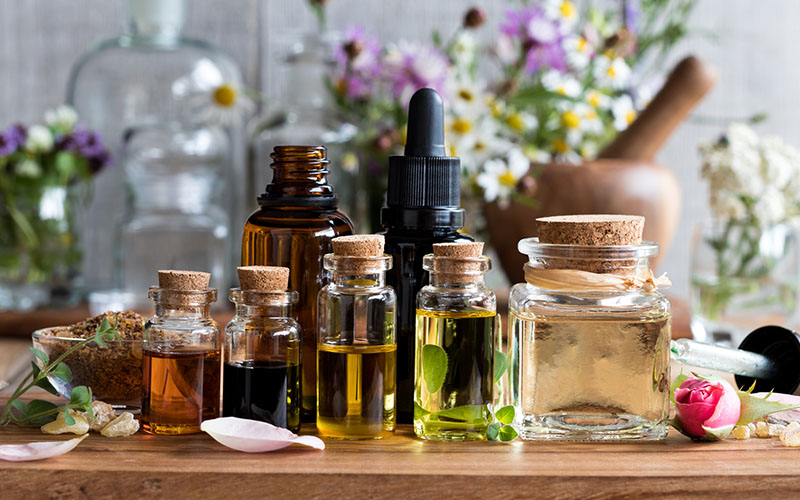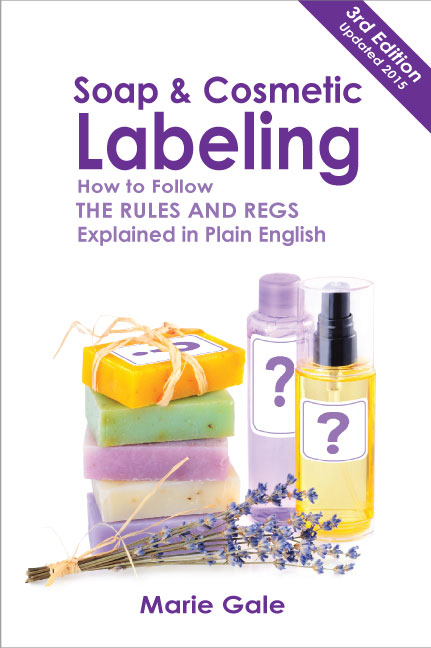One of the options available for your cosmetic ingredient list is to use the term “fragrance” to cover any ingredients (blended or not) that are used to scent your product. But what if you use a blend of plant-based essential oils to provide scent, not synthetic “fragrance oils?” The rule still applies, but you have some additional options.
The Regulations
The actual regulations for cosmetics say that you must provide an ingredient declaration that includes all of the ingredients listed in descending order of predominance. Unlike foods (where sometimes the label lists the ingredients of an ingredient within parenthesis) on cosmetic labels ALL the ingredients must be listed separately, including the individual components of a blended ingredient. For example, if you add a preservative that is a blend of several components, EACH of the components must be listed separately on the list.
That is, except for fragrances.
Directly from the regulations:
The label on each package of a cosmetic shall bear a declaration of the name of each ingredient in descending order of predominance, except that fragrance or flavor may be listed as fragrance or flavor. … No ingredient may be designated as fragrance or flavor unless it is within the meaning of such term as commonly understood by consumers. [emphasis added]
21 CFR 701.3(a)
Apparently the fragrance (and flavor) industry had some considerable sway when the regulations were being created. Unlike other blended ingredients, they don’t need to disclose the components of their fragrances.
Using Proprietary Fragrance Oils
If you are using proprietary fragrances (typically, but not always blends of synthetic fragrance substances), the regulations are pretty handy because the manufacturer won’t (and isn’t required to) tell you all the components.
Just calculate where the fragrance oil goes in the ingredient declaration and place the word “fragrance” there.
Remember, it’s just the single word “fragrance,” not the name or scent.
Using Essential Oils
Essential oils are usually purchased individually and then combined to make unique fragrances.
Considered one way, when you put several different essential oils into your cosmetic, you are adding individual ingredients, which would need to be listed in the ingredient declaration.
Considered the other way, when you combine the essential oils, you are making your own blended fragrance, which falls under the exemption for disclosing the ingredients; so you could list the whole as “fragrance”.
Either way would be correct. So how do you decide which to use?
Listing the oils individually
Listing the oils individually, particularly if you actually add them one at a time, is generally pretty easy. You know the exact percentage as part of your master recipe, so can easily place it in the ingredient declaration. Remember also that ingredients present at 1% or less may be listed in any order after ingredients present at more than 1%.
In addition, since botanical ingredients (which includes plant-based essential oils) should be listed by the common name, it’s pretty easy to list them.
So if you had .5% lavender essential oil, .4% rosemary essential oil and .3% peppermint essential oil, each one would be listed in any order after the ingredients present at more than 1%. Being a little tricky, you could scramble the order which would help protect your formula (not much, but a little, anyway).
This method also has the advantage (or possible disadvantage) of telling the consumer exactly what is in the cosmetic product.
Using “Fragrance” in the ingredient declaration
Using “fragrance” to encompass the entire essential oils blend is the easiest, especially if you mix up your essential oil blend in advance. It also makes for the shortest ingredient declaration if space on your label is an issue.
In using this method, when placing the word “fragrance” in the ingredient declaration, you do it based on the total amount of the blend used. Taking the example above, the total blend is 1.2% of the whole. That means it gets listed with the ingredients present at more than 1%.
What if it’s important that it is essential oils?
In some markets, consumers don’t know and don’t care about the difference between a synthetic fragrance oil and a plant-based essential oil; they only care if it smells like watermelon, or peppermint, or just something they really like.
In other markets, simply the idea of using a synthetic is abhorrent; synthetic fragrances must be avoided at all costs. In that case, you might think the word “fragrance” in the ingredient declaration could be a purchasing deterrent. There are, however, ways to mitigate the downsides, and maybe even turn it to your advantage.
How? With marketing text.
Remember, in addition to the required items on cosmetic labels, there should be plenty of room for other content—marketing text to sell your product. For example:
- Under the ingredient declaration, say something like “We only use pure plant-based essential oils to scent this lotion.” (Or whatever works for you.)
- On the front, say “Scented with plant-based essential oils.”
- If you don’t mind telling which essential oils you’re using, you could include that information in any description you have on the product label.
And there are probably plenty of other ways to get the data to your customers.
Whether you list the oils individually or use the term “fragrance” and provide additional information in marketing text, you can still provide your customers with the information they need to decide to purchase your product above all others.
A note about the future
It is not surprising that closing this “disclosure loophole” (as some perceive it) is one of the issues being bandied around in the discussions for additional cosmetic regulations. Over the years, wording requiring the disclosure of fragrance components has come and gone in proposed legislation (none of which has been approved).
Meantime, no doubt the flavor and fragrance industry is working hard to protect their proprietary blends from disclosure, and the truth-in-labeling folks are working hard to require full information on labels.
Whatever the result, if/when legislation is actually passed, you’ll have plenty of time to make any necessary changes to your labels.


Leave a Reply